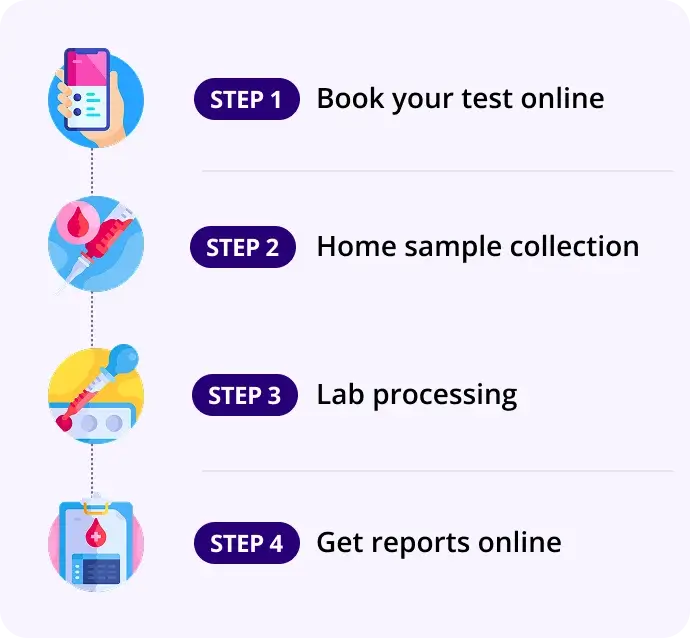Albumin
Report in 16Hrs
At Home
No Fasting Required
Details
Measures serum albumin, reflecting liver synthetic function and protein nutritional status.
₹49₹165
70% OFF
🧪 Albumin (Serum Albumin)
Parameter | Details |
|---|---|
Test Type | Blood test |
Sample Required | Serum (venous blood draw) |
Fasting Required? | ❌ Not strictly required (8–12 hour fasting may be advised in full LFT) |
Normal Range | 3.5 – 5.5 g/dL (may vary slightly between labs) |
🧠 What Is Albumin?
Albumin is the most abundant protein in your blood plasma, made by the liver. It helps maintain the osmotic pressure (fluid balance between blood and tissues) and acts as a carrier protein for hormones, vitamins, and drugs.
🔬 Why Is the Albumin Test Done?
The test helps assess:
- Liver function – Low albumin suggests the liver is not synthesizing enough protein
- Kidney function – If kidneys leak albumin into urine, blood levels fall
- Nutritional status – Long-term malnutrition or poor protein intake can reduce albumin
- Chronic illness – Inflammatory states like cancer or autoimmune disease
🏥 Organs Involved
- Liver – Produces albumin
- Kidneys – May leak albumin into urine if damaged
- GI Tract – Malabsorption or protein loss (as in IBD, celiac)
📉 Low Albumin Levels May Indicate:
Cause | Possible Conditions |
|---|---|
↓ Liver synthesis | Cirrhosis, hepatitis, liver failure |
↑ Kidney loss | Nephrotic syndrome, glomerulonephritis |
↑ GI loss | Protein-losing enteropathy, chronic diarrhea, malabsorption |
↓ Nutritional intake | Severe malnutrition, cachexia |
↑ Catabolism or inflammation | Chronic illness, sepsis, cancers |
📈 High Albumin Levels May Indicate:
- Rare, usually due to dehydration, hemoconcentration
- Can be falsely high if patient is overhydrated and test timing is incorrect
🔗 Recommended Related Tests
Test | Purpose |
|---|---|
Liver Function Test (LFT) | Measures total protein, globulin, A/G ratio, enzymes |
Urine Albumin (Microalbumin) | Detects early kidney damage in diabetes or hypertension |
Prealbumin | Shorter-term nutritional marker |
Total Protein | To calculate albumin:globulin (A/G) ratio |
Serum Creatinine, BUN | Kidney health markers |
CRP/ESR | To check inflammation (if albumin is low) |
🔄 Albumin vs Globulin vs A/G Ratio
Protein | Made In | Function |
|---|---|---|
Albumin | Liver | Maintains fluid balance, carries substances |
Globulin | Liver/immune system | Involved in immunity & transport |
A/G Ratio | Albumin ÷ Globulin | Low ratio may indicate chronic disease/inflammation |
✅ Summary Table
Test Name | Serum Albumin |
|---|---|
Purpose | Evaluate liver, kidney, nutritional and inflammatory status |
Target Organs | Liver, Kidneys, GI tract |
Reference Range | 3.5–5.5 g/dL |
Next Steps (if low) | LFT, Kidney tests, Total Protein, Urine Albumin, CRP |
How our test process works!

